Episodes
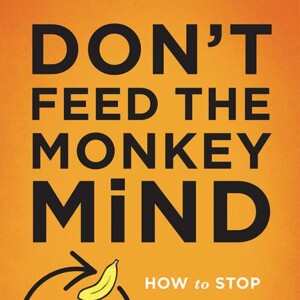
Wednesday Apr 02, 2025
Wednesday Apr 02, 2025
1 What's Don't Feed the Monkey Mind
"Don't Feed the Monkey Mind" by Jennifer Shannon focuses on the concept of mindfulness and offers practical strategies to manage anxiety and intrusive thoughts. The book employs the metaphor of a "monkey mind" to describe the restless, chaotic nature of unregulated thoughts that can lead to negative emotions and behaviors. Shannon presents techniques from cognitive-behavioral therapy and mindfulness practices that encourage readers to acknowledge their thoughts without judgment, allowing them to cultivate a more peaceful and centered state of mind. Ultimately, the book aims to empower individuals to regain control over their mental space and reduce the impact of anxiety on their lives.
2 Key Concepts of Don't Feed the Monkey Mind
In "Don't Feed the Monkey Mind" by Jennifer Shannon, Chapter 1 introduces the theme of recognizing and managing the pervasive, negative thoughts that can dominate our minds. Subsequent chapters that relate to this theme include Chapter 2, which discusses techniques for identifying these intrusive thoughts, and Chapter 4, where strategies for challenging and reframing negative thinking patterns are explored. Additionally, Chapter 7 emphasizes mindfulness practices that help in grounding oneself, thereby reducing the influence of the monkey mind. This cohesive approach throughout the book builds on the foundational concepts established in the opening chapter.
3 In-Depth Chapter Analysis of Don't Feed the Monkey Mind by Jennifer Shannon
"Don't Feed the Monkey Mind" by Jennifer Shannon is a guide that tackles the challenges of anxiety through various chapters that align closely with mindfulness and cognitive behavioral therapy principles. One significant chapter focuses on identifying and labeling negative thoughts, which is crucial for understanding the "monkey mind"—the term Shannon uses to describe the restless and often irrational nature of our thoughts. By encouraging readers to challenge these thoughts and differentiate between helpful and harmful thinking, Shannon provides practical strategies, such as journaling and cognitive restructuring techniques, that help individuals recognize patterns in their anxiety and reduce its impact.
Another pivotal chapter delves into the practice of mindfulness meditation as a tool for quieting the monkey mind. Shannon discusses the importance of grounding oneself in the present moment and observing thoughts without judgment. This chapter underscores the theme of acceptance as a means of coping with anxiety, illustrating how mindfulness can create a space between the thinker and the thought. The inclusion of specific exercises, such as mindful breathing and body scans, emphasizes the actionable nature of her teachings, enabling readers to cultivate serenity amidst mental chaos. Through these interconnected chapters, Shannon seamlessly weaves together the essence of managing anxiety by promoting awareness, acceptance, and positive action.
Book Summary Audio https://www.bookey.app/audiobook/don't-feed-the-monkey-mind
Youtube https://www.youtube.com/watch?v=QXO9XUcpCNs
Amazon https://www.amazon.com/Dont-Feed-Monkey-Mind-Anxiety/dp/1626255067
Goodreads https://www.goodreads.com/book/show/33977140-don-t-feed-the-monkey-mind

Tuesday Apr 01, 2025
Tuesday Apr 01, 2025
1 What's Death on Ocean Boulevard
"Death on Ocean Boulevard" by Caitlin Rother delves into the mysterious death of Rebecca Zahau, whose body was found hanging at her boyfriend's mansion in Coronado, California, in 2011. The book explores the intricate details of the case, including the investigation, the backdrop of tragic events surrounding Zahau's life, and the persistent questions about whether her death was a suicide, homicide, or an accident. Rother examines the complexities of interpersonal relationships, media sensationalism, and the impact of mental health, all while scrutinizing the competing theories that emerged and the varying responses from law enforcement and the Zahau family. Ultimately, the narrative highlights the enduring quest for truth and justice amidst unresolved mysteries.
2 Key Concepts of Death on Ocean Boulevard
In "Death on Ocean Boulevard" by Caitlin Rother, the theme introduced in Chapter 1 revolves around the complexities of truth and the pursuit of justice in the investigation of Sherri Papini's disappearance. Subsequent chapters that delve deeper into this theme include Chapter 3, where the initial investigation reveals conflicting narratives and uncovering hidden truths, and Chapter 5, which focuses on the media's portrayal of the case and its impact on public perception. These chapters highlight the tension between appearance and reality, further emphasizing the challenges faced by law enforcement in unearthing the actual events surrounding the case.
3 In-Depth Chapter Analysis of Death on Ocean Boulevard by Caitlin Rother
In "Death on Ocean Boulevard," Caitlin Rother meticulously explores the complex themes of obsession and the quest for truth through the various chapters that detail the mysterious death of Rebecca Zahau. For instance, early chapters delve into Rebecca's tumultuous relationships, highlighting her connection with those around her and foreshadowing the tragic events that ensue. The tension between her personal life and the intense media scrutiny illustrates the theme of external perception versus internal reality, emphasizing how Rebecca's life was overshadowed by tragic circumstances and speculation, which ultimately played a role in the narrative's evolution.
Other chapters focus on the investigative process and the various theories surrounding her death, portraying the relentless pursuit of justice and understanding that defines the story. Rother's detailed examination of the police investigation and the public's reaction underscore the theme of obsession, as both family members and investigators become fixated on uncovering the truth. The interplay between these dynamics reveals how deep emotional connections can lead to tragic outcomes, echoing the broader human struggle between love, loss, and the search for closure. This thematic depth is enhanced by Rother's nuanced portrayal of the individuals involved, illustrating how their motivations and perceptions shape the evolving narrative of Rebecca's life and death.
Book Summary Audio https://www.bookey.app/audiobook/death-on-ocean-boulevard
Youtube https://www.youtube.com/watch?v=QxUyD61CNjY
Amazon https://www.amazon.com/Death-Ocean-Boulevard-Coronado-Mansion/dp/0806540893
Goodreads https://www.goodreads.com/book/show/55033561-death-on-ocean-boulevard

Friday Mar 28, 2025
Friday Mar 28, 2025
1 What's Dark Alliance
"Dark Alliance" by Gary Webb investigates the alleged connections between the CIA, drug trafficking, and the crack cocaine epidemic in the United States during the 1980s. The book presents evidence suggesting that the CIA was complicit in the smuggling of cocaine into the U.S. to fund Contra rebels in Nicaragua, which subsequently led to devastating consequences for communities, particularly in Los Angeles. Webb's investigative journalism highlights issues of government accountability, systemic racism, and the socio-economic impact of the drug trade, ultimately challenging readers to examine the intersections of power, politics, and crime in America.
2 Key Concepts of Dark Alliance
In "Dark Alliance," Gary Webb explores the theme of government complicity and the impact of the drug trade on communities throughout various chapters. Chapter 1 sets the stage by introducing the intertwined relationships between drug trafficking, the Contra rebels, and U.S. government agencies. Subsequent chapters, particularly those detailing the Nicaraguan Contra operations and the expansion of crack cocaine in urban areas, reinforce this theme by revealing how the actions of key players and their disregard for consequences contributed to exacerbating the drug epidemic in American cities. The revelations in these chapters underscore the systemic negligence and complicity articulated in the opening chapter.
3 In-Depth Chapter Analysis of Dark Alliance by Gary Webb
In "Dark Alliance," Gary Webb meticulously weaves together a complex narrative that interconnects the CIA's operations in Central America with the crack cocaine epidemic in the United States. In Chapter 1, titled "The First Wave," Webb introduces the key players involved in the drug trade, including Nicaraguan Contra leaders and their connections to U.S. intelligence. This chapter sets the stage for the overarching theme of complicity, highlighting how government agencies ignored or even facilitated drug trafficking to fund covert operations. Webb details the journey of cocaine from Latin America to urban America, illustrating the devastating impact this had on communities, particularly in Los Angeles.
Subsequent chapters, such as "The Aftermath" and "The Tunnels," delve deeper into the ramifications of the drug trade. Webb presents evidence of how these operations were not just incidental but part of a systematic approach to undermine political movements in Latin America while exacerbating social issues in the U.S. For instance, he reveals the role of the media in perpetuating narratives that absolved the government from accountability, thus reinforcing the theme of deception and complicity. Through specific interviews, government documents, and statistics, Webb connects historical events with personal stories, demonstrating the human cost of these alliances. The culmination of these chapters reinforces the book’s central message about the moral and ethical failures of institutions that prioritizes political gains over human lives.
Book Summary Audio https://www.bookey.app/audiobook/dark-alliance
Youtube https://www.youtube.com/watch?v=BwtPmkShQrg
Amazon https://www.amazon.com/Dark-Alliance-Contras-Cocaine-Explosion/dp/1888363932
Goodreads https://www.goodreads.com/book/show/455652
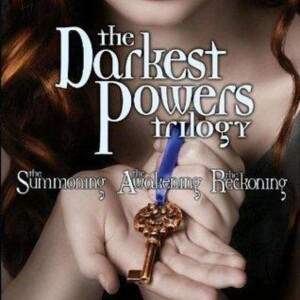
Thursday Mar 27, 2025
Thursday Mar 27, 2025
1 What's Darkest Powers Trilogy
The Darkest Powers Trilogy by Kelley Armstrong is a young adult fantasy series that explores themes of identity, belonging, and the struggle for autonomy within a world that often fears and misunderstands those who are different. The story follows Chloe Saunders, a teenage girl who discovers she has the ability to see and communicate with ghosts, leading her to a mysterious and dangerous institute for supernatural teens. Throughout the trilogy, Chloe and her friends, each with their own unique powers, navigate challenges posed by their abilities, confront a variety of supernatural threats, and grapple with issues of trust and friendship, all while seeking to uncover the truth behind their lives and the forces that seek to control them.
2 Key Concepts of Darkest Powers Trilogy
In "Darkest Powers Trilogy" by Kelley Armstrong, the theme introduced in Chapter 1 revolves around the struggle for identity and the quest for belonging amid supernatural challenges. This theme is further explored in Chapter 2, where the protagonist, Chloe, grapples with her burgeoning powers and the reality of her situation, feeling isolated from her peers. Additionally, Chapter 5 intensifies this exploration as Chloe navigates her relationships with other supernatural beings, highlighting her internal conflict and desire for acceptance. Overall, the journey throughout the trilogy reflects the ongoing challenges of understanding oneself in a world where normality is disrupted by extraordinary abilities.
3 In-Depth Chapter Analysis of Darkest Powers Trilogy by Kelley Armstrong
The "Darkest Powers Trilogy" by Kelley Armstrong primarily explores themes of identity, belonging, and the struggle against societal constraints. In the first book, "The Summoning," the protagonist Chloe Saunders wrestles with her identity as a necromancer and her place within a world that views her powers as dangerous. For example, in the early chapters, Chloe grapples with her abilities when she sees ghosts, feeling alienated and confused, which highlights her struggle for acceptance. Her experiences in Lyle House further emphasize the theme of belonging, as she yearns for genuine connections while being surrounded by other misfits.
As the series progresses into "The Awakening" and "The Reckoning," these themes deepen with the characters' increasing awareness of their powers and the oppressive forces that seek to control them. In "The Awakening," the characters begin to forge stronger bonds as they escape from their captors, illustrating their collective struggle against manipulation and highlighting the theme of rebellion against societal expectations. In the final book, “The Reckoning,” Chloe and her friends confront their adversaries, ultimately embracing their identities and powers. This culminates in a powerful sense of agency, where they define their destinies rather than being defined by the fears of others. The trilogy ultimately champions the importance of friendship and self-acceptance amidst the chaos of a world that seeks to label and confine them.
Book Summary Audio https://www.bookey.app/audiobook/darkest-powers-trilogy
Quotes https://www.bookey.app/quote-book/darkest-powers-trilogy
Youtube https://www.youtube.com/watch?v=mwb25N9RFeY
Amazon https://www.amazon.com/Darkest-Powers-Trilogy-Omnibus-Armstrong/dp/0385670516
Goodreads https://www.goodreads.com/book/show/8269450-darkest-powers-trilogy
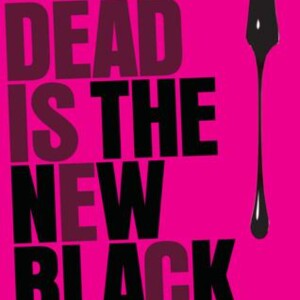
Wednesday Mar 26, 2025
Wednesday Mar 26, 2025
1 What's Dead Is the New Black
"Dead Is the New Black" by Marlene Perez follows the story of a teenage girl named Jessica, who lives in a town filled with supernatural beings and mysterious occurrences. The novel blends elements of mystery, romance, and horror, as Jessica navigates the complexities of high school life while unraveling the secrets behind a series of strange events linked to a local fashion trend of death-themed attire. The overarching theme explores identity, self-acceptance, and the impact of societal norms, as Jessica learns to embrace her uniqueness amidst the chaos, ultimately affirming that being true to oneself is more important than conforming to external expectations.
2 Key Concepts of Dead Is the New Black
In "Dead Is the New Black" by Marlene Perez, Chapter 1 introduces the theme of death and its connection to the lives of the living, setting the stage for the intertwining of supernatural elements with the everyday existence of the characters. Subsequent chapters, particularly Chapter 3, explore the complexities of mortality through the experiences of the protagonist, Jessica, as she navigates the eerie happenings in her town and confronts the implications of death on her relationships. Additionally, Chapter 5 delves deeper into the impact of these supernatural events, reinforcing the central theme by illustrating how death permeates and shapes the dynamics between the characters.
3 In-Depth Chapter Analysis of Dead Is the New Black by Marlene Perez
In "Dead Is the New Black" by Marlene Perez, the intertwining of life and death plays a crucial role, particularly in the early chapters. In Chapter 1, the protagonist, a high school student named Jessica, grapples with her identity in a world where the supernatural is an everyday occurrence. This chapter sets the tone for the exploration of themes such as acceptance and community. For example, Jessica navigates social dynamics while being part of a town that constantly faces mysteries involving supernatural elements, which reflects her inner turmoil and desire for belonging. The stark contrast of life and death is underscored when the narrative introduces the concept of "dead kids" in the local high school; these characters embody the lingering connection between life and the supernatural, foreshadowing Jessica's eventual discoveries about herself and her surroundings.
As the story progresses into Chapter 4, the theme of confronting one's fears and secrets becomes more pronounced. This chapter reveals deeper layers of Jessica’s character as she begins to uncover her own latent powers and the truth behind the deaths occurring in her community. The interplay between her evolution and the dark events around her illustrates a journey of self-discovery amidst chaos. For instance, Jessica's interactions with her friends and her growing awareness of the supernatural forces at play highlight both the allure and danger of embracing one's identity in a world filled with uncertainties. This chapter serves as a pivotal moment that deepens her connection to the themes of empowerment and acceptance, reinforcing the book’s overarching message that confronting fear—whether it be personal or supernatural—leads to growth and understanding.
Book Summary Audio https://www.bookey.app/audiobook/dead-is-the-new-black
Quotes https://www.bookey.app/quote-book/dead-is-the-new-black
Youtube https://www.youtube.com/watch?v=XdeK1jDyzoY
Amazon https://www.amazon.com/Dead-New-Black-Marlene-Perez/dp/0152064087
Goodreads https://www.goodreads.com/book/show/2273246.Dead_Is_the_New_Black
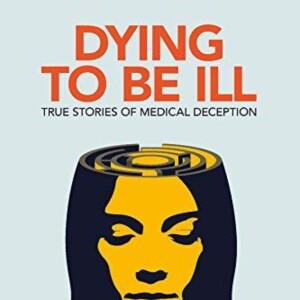
Tuesday Mar 25, 2025
Tuesday Mar 25, 2025
1 What's Dying to be Ill
"Dying to Be Ill" by Marc D. Feldman explores the phenomenon of Munchausen syndrome and related psychological disorders, where individuals intentionally feign or induce illness to gain attention and sympathy. The book delves into the motivations behind this behavior, including the emotional and psychological needs that drive individuals to fabricate medical conditions. Feldman draws on real-life case studies and his own experiences as a physician to provide insight into the complexities of these disorders, the challenges they pose for healthcare providers, and the impact on both patients and their families. Ultimately, the book highlights the need for compassion and understanding when addressing these intricate psychological issues.
2 Key Concepts of Dying to be Ill
In "Dying to be Ill" by Marc D. Feldman, Chapter 1 introduces the theme of factitious disorder and the complex psychological motivations behind it. Subsequent chapters that relate to this theme include Chapter 2, which explores the various forms of factitious disorder, and Chapter 5, which delves into case studies illustrating the lengths individuals may go to in order to substantiate their illnesses. Additionally, Chapter 7 addresses the societal and relational impacts of these behaviors, providing further context to the motivations discussed in the initial chapter. Together, these chapters deepen the understanding of the nuances of factitious disorder beyond the foundational concepts presented in Chapter 1.
3 In-Depth Chapter Analysis of Dying to be Ill by Marc D. Feldman
In "Dying to be Ill," Marc D. Feldman explores the complexities of factitious disorders, focusing on individuals who feign illness for attention or sympathy. In Chapter 2, “The Syndrome,” Feldman outlines the clinical characteristics of Factitious Disorder and differentiates it from other psychological conditions, emphasizing the profound need for care from others as a driving force behind this behavior. This chapter serves as the foundation for understanding not only the psychological mechanisms at play but also the societal impact of these disorders. The connection to the overarching theme of the desperate search for attention and validation is evident as Feldman presents case studies demonstrating the lengths to which individuals will go to achieve sympathy from both medical professionals and their families.
Another crucial chapter, Chapter 5, “The Imposter’s Playbook,” delves into the strategies employed by those with Factitious Disorder to fabricate illness convincingly. Here, Feldman provides detailed examples of manipulation and deceit, illustrating the psychological complexity of the disorder. The narrative of a patient who fabricates symptoms to gain hospital admission underscores the lengths to which individuals will go to maintain their "sick role," reinforcing the theme of a deep-seated desire for recognition and emotional support. This chapter, alongside the foundational understanding presented in Chapter 2, weaves a rich tapestry of how mental illness intertwines with societal perceptions of illness and caregiving, thereby enhancing our comprehension of the human experience behind these disorders.
Book Summary Audio https://www.bookey.app/audiobook/dying-to-be-ill
Youtube https://www.youtube.com/watch?v=8j8GAFr04Qs
Amazon https://www.amazon.com/Dying-Ill-Stories-Medical-Deception-ebook/dp/B07D18L8KQ
Goodreads https://www.goodreads.com/book/show/40165460-dying-to-be-ill
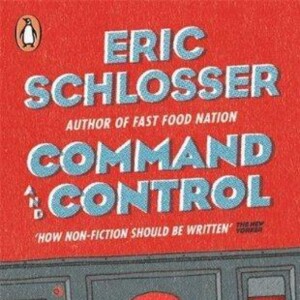
Friday Mar 21, 2025
Friday Mar 21, 2025
1 What's Command and Control
"Command and Control" by Eric Schlosser explores the complex and often dangerous management of nuclear weapons in the United States, delving into the historical events, accidents, and near-misses that reveal the fragility of the systems designed to keep nuclear arsenals under control. Through detailed accounts of incidents, including the 1980 Damascus Titan missile explosion, Schlosser illustrates the human errors, technical failures, and bureaucratic challenges that could lead to catastrophic consequences. The overarching theme highlights the thin line between safety and disaster in a system reliant on both technology and human judgment, emphasizing the inherent risks of nuclear armament and the need for accountability and transparency in national security protocols.
2 Key Concepts of Command and Control
In "Command and Control" by Eric Schlosser, Chapter 1 introduces the theme of the precarious nature of nuclear weapons and the system that surrounds them. This theme is echoed throughout the book, particularly in Chapters 3, 4, and 5, which delve into specific incidents that highlight the vulnerabilities and risks associated with nuclear command and control structures. These chapters examine real-life events that demonstrate the potential for catastrophic failures and the deeply flawed systems intended to maintain safety and security, underscoring the overarching concern introduced at the beginning about the dangers of relying on technology and human judgment in nuclear management.
3 In-Depth Chapter Analysis of Command and Control by Eric Schlosser
In Eric Schlosser's "Command and Control," various chapters interweave personal narratives, historical accounts, and technical details to explore the underlying themes of the dangers of nuclear weapons and the complexities of military governance. One key chapter details the 1980 Damascus Titan missile accident, illustrating the precariousness of nuclear systems and the human errors that can lead to catastrophe. This event serves as a poignant example of how technological advancements, while intended to enhance security, can instead introduce significant risks. Schlosser highlights the near-misses and incidents that underline the fragility of the systems meant to protect us, bringing forth a sobering reminder of the ever-present threat of nuclear disaster.
Another significant chapter focuses on the Cold War era's psychological impact on military personnel and the political landscape, particularly through interviews and testimonies from former airmen and officers. By weaving personal experiences with broader historical context, Schlosser emphasizes the theme of bureaucracy and the tension between military authority and individual responsibility. For instance, the frustrations voiced by personnel about the procedures in place illuminate the bureaucratic inefficiencies that can compromise safety. Through these narratives, Schlosser argues that the nuclear arsenal is not just a technical or strategic issue but a deeply human one, shaped by fear, miscommunication, and the struggle for control in an inherently dangerous environment.
Book Summary Audio https://www.bookey.app/audiobook/command-and-control
Quotes https://www.bookey.app/quote-book/command-and-control
Youtube https://www.youtube.com/watch?v=PWl-qYje1oY
Amazon https://www.amazon.com/Command-Control-Damascus-Accident-Illusion/dp/0143125788
Goodreads https://www.goodreads.com/book/show/6452798-command-and-control
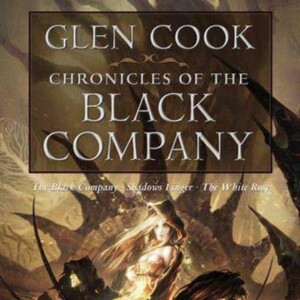
Thursday Mar 20, 2025
Thursday Mar 20, 2025
1 What's Chronicles of the Black Company
"Chronicles of the Black Company" by Glen Cook follows the experiences of an elite mercenary group known as the Black Company, exploring themes of loyalty, morality, and the gray areas of right and wrong in warfare. The narrative is presented through the eyes of Croaker, the company's physician and annalist, who documents the brutal realities of their service under various warlords and their involvement in the struggle between powerful forces in a fantastical world. The series blends gritty realism with elements of magic and prophecy, examining how the characters navigate their complex allegiances and the consequences of their choices in a harsh and unforgiving landscape.
2 Key Concepts of Chronicles of the Black Company
In Chapter 1 of "Chronicles of the Black Company," the theme of moral ambiguity and the complexity of war is introduced as the narrator, Croaker, reflects on the nature of his mercenary band and the choices they must make. This theme is echoed throughout the book, particularly in later chapters such as Chapter 3, where the consequences of their actions and the fraught loyalties in their profession come into play. Additionally, Chapter 6 delves deeper into the ethical dilemmas faced by the company as alliances shift and the lines between right and wrong blur further, reinforcing the pervasive sense of moral ambiguity that characterizes their existence.
3 In-Depth Chapter Analysis of Chronicles of the Black Company by Glen Cook
In "Chronicles of the Black Company," Glen Cook explores themes of morality, loyalty, and the brutal nature of war through the experiences of the titular mercenary group. In Chapter 1, the introduction of the narrator, Croaker, establishes the blurred lines between good and evil, as the Black Company is portrayed not as traditional heroes but as pragmatic soldiers navigating a morally complex world. This theme is further developed in later chapters, such as Chapter 3, where the company grapples with their allegiance to the mysterious and sinister Lady while facing the moral implications of their actions. The intricate dynamics of loyalty are explored through the relationships among the company members, highlighting the personal sacrifices they make amid the chaos of war.
As the narrative progresses, the intricate connections between comrades and the harsh realities of their lifestyle are emphasized in Chapters 5 and 7. Here, Cook delves into the camaraderie that binds the members of the Black Company, even as they confront betrayal and dark choices. The tension between survival and ethics intensifies as individuals are forced to confront the consequences of their decisions, exemplifying how war shapes their identity and loyalty. Ultimately, the interplay between these chapters illustrates the overarching theme of the duality of man, showcasing how the Black Company navigates the treacherous terrain of allegiance while struggling to maintain their humanity amidst moral ambiguity.
Book Summary Audio https://www.bookey.app/audiobook/chronicles-of-the-black-company
Quotes https://www.bookey.app/quote-book/chronicles-of-the-black-company
Youtube https://www.youtube.com/watch?v=nm90grI24-M
Amazon https://www.amazon.com/Black-Company-Chronicles/dp/0812521390
Goodreads https://www.goodreads.com/book/show/400924.Chronicles_of_the_Black_Company
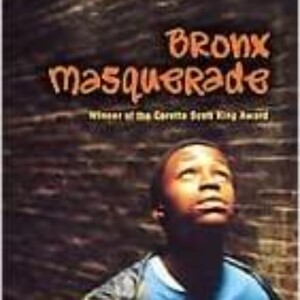
Wednesday Mar 19, 2025
Wednesday Mar 19, 2025
1 What's Bronx Masquerade
"Bronx Masquerade" by Nikki Grimes explores themes of identity, self-expression, and the transformative power of art through the lives of a diverse group of high school students in the Bronx. Set primarily in an English class where the students are encouraged to share their poetry, the narrative unfolds through their individual voices, revealing their struggles with cultural backgrounds, personal challenges, and aspirations. As they open up through their writing, the students learn to embrace their true selves while confronting societal pressures and expectations, highlighting the importance of community and understanding in overcoming adversity.
2 Key Concepts of Bronx Masquerade
In Chapter 1 of "Bronx Masquerade," the theme of identity and self-expression is introduced through the character of Wesley, who grapples with his own sense of self amidst the challenges of his environment. Subsequent chapters, such as those focusing on characters like Diondra and Lupe, further explore this theme as they share their personal struggles and aspirations through poetry. These chapters reveal the complexity of their identities, highlighting how creativity serves as a powerful outlet for self-discovery and connection within the diverse experiences of their lives in the Bronx. Together, these contributions illustrate the overarching theme of finding one's voice and embracing individuality.
3 In-Depth Chapter Analysis of Bronx Masquerade by David W Moore
In "Bronx Masquerade" by Nikki Grimes, a critical chapter is Chapter 1, where the reader is introduced to the concept of open-mic poetry sessions at the high school. This sets the stage for the exploration of identity and self-expression—central themes of the novel. The students’ personal struggles, cultural backgrounds, and aspirations are highlighted through their poetry, allowing them to strip away societal masks. For instance, the character Dionte reflects on his experiences as a Black teen, sharing the weight of expectations and his desire to be seen for who he truly is. This chapter encapsulates the power of words as a means for personal revelation and connection among peers.
Another significant chapter is Chapter 5, featuring the voice of Tanisha, who shares her thoughts on beauty and self-image. The theme of authenticity versus façade layers deeper into the story as she grapples with societal standards of attractiveness and her own insecurities. Her poem serves as a poignant reminder of the internal battles faced by young people today, resonating with themes of self-acceptance and empowerment. Tanisha’s realization that true beauty comes from confidence and inner strength highlights the overarching message of the book: that vulnerability and honesty foster genuine connections and help individuals embrace their identities. Through these chapters, Grimes effectively uses poetry as a vehicle for transformation and insight, encouraging readers to confront their own "masks."
Book Summary Audio https://www.bookey.app/audiobook/bronx-masquerade
Amazon https://www.amazon.com/Bronx-Masquerade-David-W-Moore/dp/0736231358
Goodreads https://www.goodreads.com/book/show/18312517

Tuesday Mar 18, 2025
Tuesday Mar 18, 2025
1 What's Boundary Boss
"Boundary Boss" by Terri Cole explores the essential role of boundaries in creating healthy relationships and fostering self-respect. The book provides practical strategies for identifying and establishing personal boundaries, emphasizing that effective communication and self-awareness are key to asserting one's needs and desires. Cole draws on her experience as a psychotherapist to guide readers through the process of overcoming fears of rejection and confrontation, ultimately empowering them to take control of their lives by cultivating assertiveness and emotional resilience.
2 Key Concepts of Boundary Boss
In "Boundary Boss" by Terri Cole, the theme introduced in Chapter 1 revolves around establishing healthy boundaries and asserting one's needs. This theme is further explored in subsequent chapters, particularly in Chapter 3, where Cole delves into the importance of self-awareness and recognizing personal limits. Additionally, Chapter 5 emphasizes practical strategies for setting and maintaining boundaries in various relationships, reinforcing the core message of empowerment and self-advocacy introduced at the beginning of the book. Together, these chapters build upon the foundational concepts laid out in Chapter 1, providing readers with a comprehensive understanding of how to navigate personal boundaries effectively.
3 In-Depth Chapter Analysis of Boundary Boss by Terri Cole
In "Boundary Boss," Terri Cole intricately explores the theme of personal empowerment and the importance of healthy boundaries through various chapters that provide practical insights and relatable anecdotes. For instance, in Chapter 2, titled "What Are Boundaries?", Cole clarifies the concept of boundaries by distinguishing between physical, emotional, and energetic boundaries. This chapter emphasizes how understanding boundaries is crucial for self-love and autonomy, presenting examples from her clinical practice where clients learned to assert their needs and reduce feelings of resentment. Cole's personal stories about her struggles with boundaries provide a relatable framework for readers, reinforcing the idea that everyone can cultivate healthier relationships by advocating for themselves.
In Chapter 5, titled "The Boundary Boss Blueprint," Cole presents actionable steps to implement boundaries in daily life, which ties back to the overarching theme of reclaiming personal power. She discusses practical tools such as the “boundary script,” helping readers articulate their needs clearly and confidently. By sharing success stories, Cole illustrates how these practices lead to more fulfilling interactions and a profound shift in self-perception, empowering individuals to take control of their lives. Through her personal anecdotes and practical advice, each chapter builds upon the fundamental message of the book—in order to lead a balanced and fulfilling life, one must first understand and establish healthy boundaries.
Book Summary Audio https://www.bookey.app/audiobook/boundary-boss
Youtube https://www.youtube.com/watch?v=Q1k5egNz2lE
Amazon https://www.amazon.com/Boundary-Boss-Essential-Guide-Finally/dp/1683647688
Goodreads https://www.goodreads.com/book/show/53359440-boundary-boss








